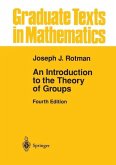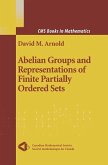Kenneth S. Brown
Cohomology of Groups (eBook, PDF)
52,95 €
52,95 €
inkl. MwSt.
Sofort per Download lieferbar

26 °P sammeln
52,95 €
Als Download kaufen

52,95 €
inkl. MwSt.
Sofort per Download lieferbar

26 °P sammeln
Jetzt verschenken
Alle Infos zum eBook verschenken
52,95 €
inkl. MwSt.
Sofort per Download lieferbar
Alle Infos zum eBook verschenken

26 °P sammeln
Kenneth S. Brown
Cohomology of Groups (eBook, PDF)
- Format: PDF
- Merkliste
- Auf die Merkliste
- Bewerten Bewerten
- Teilen
- Produkt teilen
- Produkterinnerung
- Produkterinnerung

Bitte loggen Sie sich zunächst in Ihr Kundenkonto ein oder registrieren Sie sich bei
bücher.de, um das eBook-Abo tolino select nutzen zu können.
Hier können Sie sich einloggen
Hier können Sie sich einloggen
Sie sind bereits eingeloggt. Klicken Sie auf 2. tolino select Abo, um fortzufahren.

Bitte loggen Sie sich zunächst in Ihr Kundenkonto ein oder registrieren Sie sich bei bücher.de, um das eBook-Abo tolino select nutzen zu können.
As a second year graduate textbook, Cohomology of Groups introduces students to cohomology theory (involving a rich interplay between algebra and topology) with a minimum of prerequisites. No homological algebra is assumed beyond what is normally learned in a first course in algebraic topology. The basics of the subject are given (along with exercises) before the author discusses more specialized topics.
- Geräte: PC
- ohne Kopierschutz
- eBook Hilfe
- Größe: 25.85MB
Andere Kunden interessierten sich auch für
![The History of Combinatorial Group Theory (eBook, PDF) The History of Combinatorial Group Theory (eBook, PDF)]() B. ChandlerThe History of Combinatorial Group Theory (eBook, PDF)68,95 €
B. ChandlerThe History of Combinatorial Group Theory (eBook, PDF)68,95 €![A First Course in Group Theory (eBook, PDF) A First Course in Group Theory (eBook, PDF)]() Cyril F. GardinerA First Course in Group Theory (eBook, PDF)40,95 €
Cyril F. GardinerA First Course in Group Theory (eBook, PDF)40,95 €![Matrix Groups (eBook, PDF) Matrix Groups (eBook, PDF)]() M. L. CurtisMatrix Groups (eBook, PDF)60,95 €
M. L. CurtisMatrix Groups (eBook, PDF)60,95 €![An Introduction to the Theory of Groups (eBook, PDF) An Introduction to the Theory of Groups (eBook, PDF)]() Joseph J. RotmanAn Introduction to the Theory of Groups (eBook, PDF)48,95 €
Joseph J. RotmanAn Introduction to the Theory of Groups (eBook, PDF)48,95 €![The Theory of Finite Groups (eBook, PDF) The Theory of Finite Groups (eBook, PDF)]() Hans KurzweilThe Theory of Finite Groups (eBook, PDF)48,95 €
Hans KurzweilThe Theory of Finite Groups (eBook, PDF)48,95 €![Abelian Groups and Representations of Finite Partially Ordered Sets (eBook, PDF) Abelian Groups and Representations of Finite Partially Ordered Sets (eBook, PDF)]() David ArnoldAbelian Groups and Representations of Finite Partially Ordered Sets (eBook, PDF)40,95 €
David ArnoldAbelian Groups and Representations of Finite Partially Ordered Sets (eBook, PDF)40,95 €![A Course in Homological Algebra (eBook, PDF) A Course in Homological Algebra (eBook, PDF)]() Peter J. HiltonA Course in Homological Algebra (eBook, PDF)56,95 €
Peter J. HiltonA Course in Homological Algebra (eBook, PDF)56,95 €-
-
-
As a second year graduate textbook, Cohomology of Groups introduces students to cohomology theory (involving a rich interplay between algebra and topology) with a minimum of prerequisites. No homological algebra is assumed beyond what is normally learned in a first course in algebraic topology. The basics of the subject are given (along with exercises) before the author discusses more specialized topics.
Dieser Download kann aus rechtlichen Gründen nur mit Rechnungsadresse in A, B, BG, CY, CZ, D, DK, EW, E, FIN, F, GR, HR, H, IRL, I, LT, L, LR, M, NL, PL, P, R, S, SLO, SK ausgeliefert werden.
Produktdetails
- Produktdetails
- Verlag: Springer US
- Seitenzahl: 309
- Erscheinungstermin: 6. Dezember 2012
- Englisch
- ISBN-13: 9781468493276
- Artikelnr.: 44053784
- Verlag: Springer US
- Seitenzahl: 309
- Erscheinungstermin: 6. Dezember 2012
- Englisch
- ISBN-13: 9781468493276
- Artikelnr.: 44053784
- Herstellerkennzeichnung Die Herstellerinformationen sind derzeit nicht verfügbar.
Kenneth S. Brown has been a professor at Cornell since 1971. He received his Ph.D. in 1971 from MIT. He has published many works, including Buildings with Springer-Verlag in 1989, reprinted in 1998. Peter Abramenko received his Ph.D. in 1987 from the University of Frankfurt, Germany. He held various academic positions afterwards, including a Heisenberg fellowship from 1998 until 2001. Since 2001, he is Associate Professor at the University of Virginia in Charlottesville. He has previously published Twin Buildings and Applications to S-Arithmetic Groups for the Lecture Notes in Mathematics series for Springer (1996).
I Some Homological Algebra.- 0. Review of Chain Complexes.- 1. Free Resolutions.- 2. Group Rings.- 3. G-Modules.- 4. Resolutions of Z Over ZG via Topology.- 5. The Standard Resolution.- 6. Periodic Resolutions via Free Actions on Spheres.- 7. Uniqueness of Resolutions.- 8. Projective Modules.- Appendix. Review of Regular Coverings.- II The Homology of a Group.- 1. Generalities.- 2. Co-invariants.- 3. The Definition of H*G.- 4. Topological Interpretation.- 5. Hopfs Theorems.- 6. Functoriality.- 7. The Homology of Amalgamated Free Products.- Appendix. Trees and Amalgamations.- III Homology and Cohomology with Coefficients.- 0. Preliminaries on ?G and HomG.- 1. Definition of H*(G, M) and H*(G, M).- 2. Tor and Ext.- 3. Extension and Co-extension of Scalars.- 4. Injective Modules.- 5. Induced and Co-induced Modules.- 6. H* and H* as Functors of the Coefficient Module.- 7. Dimension Shifting.- 8. H* and H* as Functors of Two Variables.- 9. The Transfer Map.- 10. Applications of the Transfer.- IV Low Dimensional Cohomology and Group Extensions.- 1. Introduction.- 2. Split Extensions.- 3. The Classification of Extensions with Abelian Kernel.- 4. Application: p-Groups with a Cyclic Subgroup of Index p.- 5. Crossed Modules and H3 (Sketch).- 6. Extensions With Non-Abelian Kernel (Sketch).- V Products.- 1. The Tensor Product of Resolutions.- 2. Cross-products.- 3. Cup and Cap Products.- 4. Composition Products.- 5. The Pontryagin Product.- 6. Application: Calculation of the Homology of an Abelian Group.- VI Cohomology Theory of Finite Groups.- 1. Introduction.- 2. Relative Homological Algebra.- 3. Complete Resolutions.- 4. Definition of ?*.- 5. Properties of ?*.- 6. Composition Products.- 7. A Duality Theorem.- 8. Cohomologically Trivial Modules.- 9. Groups with Periodic Cohomology.- VII Equivariant Homology and Spectral Sequences.- 1. Introduction.- 2. The Spectral Sequence of a Filtered Complex.- 3. Double Complexes.- 4. Example: The Homology of a Union.- 5. Homology of a Group with Coefficients in a Chain Complex.- 6. Example: The Hochschild-Serre Spectral Sequence.- 7. Equivariant Homology.- 8. Computation of d1.- 9. Example: Amalgamations.- 10. Equivariant Tate CohoMology.- VIII Finiteness Conditions.- 1. Introduction.- 2. CohoMological Dimension.- 3. Serre's Theorem.- 4. Resolutions of Finite Type.- 5. Groups of Type FPn.- 6. Groups of Type FF and FL.- 7. Topological Interpretation.- 8. Further Topological Results.- 9. Further Examples.- 10. Duality Groups.- 11. Virtual Notions.- IX Euler Characteristics.- 1. Ranks of Projective Modules: Introduction.- 2. The Hattori-Stallings Rank.- 3. Ranks Over Commutative Rings.- 4. Ranks Over Group Rings; Swan's Theorem.- 5. Consequences of Swan's Theorem.- 6. Euler Characteristics of Groups: The Torsion-Free Case.- 7. Extension to Groups with Torsion.- 8. Euler Characteristics and Number Theory.- 9. Integrality Properties of ?(?).- 10. Proof of Theorem 9.3; Finite Group Actions.- 11. The Fractional Part of ?(?).-12. Acyclic Covers; Proof of Lemma 11.2.- 13. The p-Fractional Part of ?(?).- 14. A Formula for ??(A).- X Farrell Cohomology Theory.- 1. Introduction.- 2. Complete Resolutions.- 3. Definition and Properties of ?*(?)277.- 4. Equivariant Farrell Cohomology.- 5. Cohomologically Trivial Modules.- 6. Groups with Periodic Cohomology.- 7. ?*(?) and the Ordered Set of Finite Subgroups of ?.- References.- Notation Index.
I Some Homological Algebra.- 0. Review of Chain Complexes.- 1. Free Resolutions.- 2. Group Rings.- 3. G-Modules.- 4. Resolutions of Z Over ZG via Topology.- 5. The Standard Resolution.- 6. Periodic Resolutions via Free Actions on Spheres.- 7. Uniqueness of Resolutions.- 8. Projective Modules.- Appendix. Review of Regular Coverings.- II The Homology of a Group.- 1. Generalities.- 2. Co-invariants.- 3. The Definition of H*G.- 4. Topological Interpretation.- 5. Hopfs Theorems.- 6. Functoriality.- 7. The Homology of Amalgamated Free Products.- Appendix. Trees and Amalgamations.- III Homology and Cohomology with Coefficients.- 0. Preliminaries on ?G and HomG.- 1. Definition of H*(G, M) and H*(G, M).- 2. Tor and Ext.- 3. Extension and Co-extension of Scalars.- 4. Injective Modules.- 5. Induced and Co-induced Modules.- 6. H* and H* as Functors of the Coefficient Module.- 7. Dimension Shifting.- 8. H* and H* as Functors of Two Variables.- 9. The Transfer Map.- 10. Applications of the Transfer.- IV Low Dimensional Cohomology and Group Extensions.- 1. Introduction.- 2. Split Extensions.- 3. The Classification of Extensions with Abelian Kernel.- 4. Application: p-Groups with a Cyclic Subgroup of Index p.- 5. Crossed Modules and H3 (Sketch).- 6. Extensions With Non-Abelian Kernel (Sketch).- V Products.- 1. The Tensor Product of Resolutions.- 2. Cross-products.- 3. Cup and Cap Products.- 4. Composition Products.- 5. The Pontryagin Product.- 6. Application: Calculation of the Homology of an Abelian Group.- VI Cohomology Theory of Finite Groups.- 1. Introduction.- 2. Relative Homological Algebra.- 3. Complete Resolutions.- 4. Definition of ?*.- 5. Properties of ?*.- 6. Composition Products.- 7. A Duality Theorem.- 8. Cohomologically Trivial Modules.- 9. Groups with Periodic Cohomology.- VII Equivariant Homology and Spectral Sequences.- 1. Introduction.- 2. The Spectral Sequence of a Filtered Complex.- 3. Double Complexes.- 4. Example: The Homology of a Union.- 5. Homology of a Group with Coefficients in a Chain Complex.- 6. Example: The Hochschild-Serre Spectral Sequence.- 7. Equivariant Homology.- 8. Computation of d1.- 9. Example: Amalgamations.- 10. Equivariant Tate CohoMology.- VIII Finiteness Conditions.- 1. Introduction.- 2. CohoMological Dimension.- 3. Serre's Theorem.- 4. Resolutions of Finite Type.- 5. Groups of Type FPn.- 6. Groups of Type FF and FL.- 7. Topological Interpretation.- 8. Further Topological Results.- 9. Further Examples.- 10. Duality Groups.- 11. Virtual Notions.- IX Euler Characteristics.- 1. Ranks of Projective Modules: Introduction.- 2. The Hattori-Stallings Rank.- 3. Ranks Over Commutative Rings.- 4. Ranks Over Group Rings; Swan's Theorem.- 5. Consequences of Swan's Theorem.- 6. Euler Characteristics of Groups: The Torsion-Free Case.- 7. Extension to Groups with Torsion.- 8. Euler Characteristics and Number Theory.- 9. Integrality Properties of ?(?).- 10. Proof of Theorem 9.3; Finite Group Actions.- 11. The Fractional Part of ?(?).-12. Acyclic Covers; Proof of Lemma 11.2.- 13. The p-Fractional Part of ?(?).- 14. A Formula for ??(A).- X Farrell Cohomology Theory.- 1. Introduction.- 2. Complete Resolutions.- 3. Definition and Properties of ?*(?)277.- 4. Equivariant Farrell Cohomology.- 5. Cohomologically Trivial Modules.- 6. Groups with Periodic Cohomology.- 7. ?*(?) and the Ordered Set of Finite Subgroups of ?.- References.- Notation Index.







